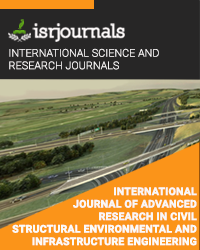experimental study on twisted waste plastic fibre reinforced concrete for m30 & m35 grades
Arulmozhi K,Abinaya K,Arulkumaran S,Gopinath L
Published in International Journal of Advanced Research in Civil,Structural,Environmental and Infrastructure Engineering and Developing
ISSN: 2320-723X Impact Factor:1.7 Volume:2 Issue:2 Year: 22 March,2016 Pages:134-140

Abstract
Now a days plastic bags are commonly used for packing, carrying vegetables, meat etc creates a serious environmental problem. Plastic bag last in environment up to 1000 years because of plastic bag last so long the number of plastic bag accumulated increases each year. Disposal of large quantity of plastic bag may cause pollution of land, water bodies and air. The proposed concrete which is made up by adding Twisted plastic Fibre in concrete may help to reuse the plastic bag as one of the constituent’s material of concrete, to improve the certain properties of concrete. The properties of concrete containing varying percentages of Twisted plastic fibre were tested for compressive strength and Flexural strength and shows that an appreciable improvement in tensile strength of concrete can be achieved by introducing cut pieces of twisted plastic fibre.
Kewords
Compressive Strength & Flexural Strength, Twisted Plastic fibre, Plastic Bag, and Environmental Problems.
Reference
[3] MahendraR.Chitlange and Prakash S.Pajgade “Strength appraisal of artificial sand as fine aggregate in SFRC” ARPN Journal of Engineering and Applied Science, Vol. 5, No.10, 2010, pp. 34-38. [4] Kandasamy.R and Murugesan.R “Fibre Reinforced self compacting concrete using domestic waste plastics as fibres” Journal of Engineering and applied science Vol.7, 2012, pp 405-410. [5] Elavenil.S and Vijaya.B “Manufactured sand, A solution and an alternative to river sand and in concrete manufacturing” Journal of Engineering, Computers& Applied Science (JEC&AS) Vol. 2, No.2, 2013, pp.2024.

